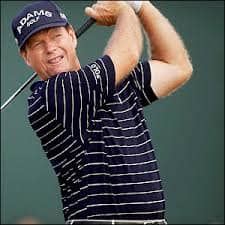In orthodontics, evolution is a steadfast constant. That’s a good thing, as treatment is now faster and better, and, as a result, the quality of our patients’ lives has improved significantly.
But do we see a parallel evolution on the business side?
In the last 2 years, the American Association of Orthodontists (AAO) annual sessions—in New Orleans in 2014 and San Francisco early this year—have been particularly interesting for their change in tone. At the New Orleans session, speakers for the doctor and staff programs were given specific instructions to talk about practical applications—what works and what doesn’t, whether from a clinical or a business angle, based on best available evidence. It was not only a timely format, but
the most informative we can remember.
Once doctors left the lecture halls and ventured into the exhibit hall, their own focus was on those practical applications. Their thoughts weighed heavily as they assessed the value of new technology and how they could do things differently with that new technology. They were weighing what this technology would mean for their business. Rather than thinking to themselves, “What should we buy/do to grow bigger in the coming year?”, doctors were asking themselves, “What do we buy/do now to maintain our position/momentum?”
This wasn’t an overnight cerebral switch; it was years in the making.
Fast-forward a year and the atmosphere was again different at the AAO annual session in San Francisco. There was more optimism and doctors were more attentive to advances in technology. Attentive, however, did not necessarily mean sales for exhibitors. From our perspective, this was because advances were evolutionary rather than revolutionary. Novel clinical, treatment-related, easy-to-adopt products with lower price tags sold well, indicating that the mid-career practicing orthodontist, for example, is on the move to make more subtle changes in their practice. The focus there was on the level of service that could be provided and those products that will lend themselves to improving the level of service, whether that be cosmetic retainers, staff training, or systems that would free doctor time.
But what do these changes mean? They are the rumbles before a volcano erupts, in our opinion. These are the preparatory moves that indicate changes are coming to orthodontic practices. But what are these changes?
Entertain-Reward-Oblige
In recent years, the established practices have been working hard to create their own patient sources—a consequence of fewer referrals from dentists. To increase the number of new patient calls, and to avoid being a victim of out of sight, out of mind, they have had to proactively promote their practice. The basic formula was to reach out to more people and do more for them, whether that be entertaining them or rewarding them on top of treating them. And in return, parents would feel obliged to bring their kids to the practice. This formula worked well to maintain the momentum if the neighborhood was doing well economically.
But does it work predictably for everyone?
[sidebar float=”right” width=”250″]The Importance of Being Unique
Working with design clients, we never fail to hear them say they want to deliver high-quality orthodontics. In their mind, quality is what is unique to their brand. But it is difficult to believe there is a group of orthodontists who want to brand their practice as low-quality orthodontics. We argue quality is a given, not a brand. It ought to be understood that a specialist, like an orthodontist, will provide higher quality service than a non-specialist.
Might these orthodontists be using the word quality when they mean the word unique? We think the answer to that is yes.
Every individual is unique. Every practice is a reflection of the orthodontist. Thus, every practice has to be unique.
But do patients know that?
Often, patients think they are buying little bits of metal or pieces of horseshoe-shaped plastic. To them, the vendor does not matter. So why not go to the cheaper general dentist or corporate practice?
What is a sensible answer to this question?
It should be understood that the type of customer who chooses a corporate practice would never come to a private orthodontic practice. Equally, the private practice orthodontist must ensure that the type of patient that comes to their office must never set foot in a corporate practice. The progressive orthodontist need not particularly compete with the corporate model. Instead, the progressive orthodontist’s practice needs to be as unique as they themselves are.
The orthodontist must make the patient want to come to the private practice.
And here, it’s not the orthodontist who matters most. Since Internet marketing and social media have expanded and exploded, an orthodontist’s personality no longer makes the first impression. Images of the office do. These are what prospective patients see first when they search for an orthodontist online. As is true of male birds during mating season, the wares of the practice space must be fluffed up like the bird’s plumage. Thus, the office space is as crucially important as the website. Patients will try on—not so much for size, as for fit—a number of practices. Websites bring in the patients; but the space will keep them.
Current marketplace winds are blowing differently than what most senior orthodontists are accustomed to. Arguably, options for future practices are the ortho/pedo model or truly special orthodontic specialty practices that are not engaged in competition with the dentist and demand specialty fees. [/sidebar]Not necessarily. The entertain-reward-oblige formula will probably do better for those orthodontists who are the local boys and girls of the community or long-established iconic practices. It probably won’t work so well for those offices with a shorter tenure in the neighborhood.
Let’s look back; where did this shift to entertain-reward-oblige come from?
There are two drivers in this shift: One, advances in image-driven appliance products, and two, corporate dentistry. With regard to the first, there is nothing we can do to stop how technology is evolving. But as to the second…If we look around, except for certain specialties, there are few private one-physician medical practices left. All have been absorbed by hospitals. Physicians now work for wages, with the number of work days and hours dictated by the hospital. Can orthodontists avoid such a fate? In the future, can most private orthodontic practices expect to be absorbed by corporate general dental practices?
Eliminate Choice
We posit that a good number of orthodontists may need to better secure their place in the market by transforming their practices. This may mean either making their practice unique or following the trend. But either way, the fundamental strategy for the future must be to dispel the potential choices a patient has. One way to eliminate choice and compete with corporate practices at the same time: partner with a general or pediatric dentist.
Corporate dental practices are flourishing because they are able to incorporate orthodontics into their businesses. In response, our best defense is offense. The ortho/pedo model fits perfectly into the corporate practice trend. It is a “micro corporate” private practice. More importantly, it eliminates the choice factor. But this micro corporate practice concept need not be limited to the ortho/pedo model. The point is to build a special practice that eliminates a patient’s need to make a choice about where to go for specialized treatment.
Fee Superiority
Another aspect of this necessary practice transformation is fees—specifically, the need to charge higher fees. It is a cardinal sin for an orthodontist to assume competition is the general dentist, and to keep fees low. It only leads to loss of distinction of orthodontic tooth movements delivered by the dentist versus the orthodontist. If the orthodontist believes orthodontics done by an orthodontist is superior, then the fees should be superior to the extent of the superiority. Everyone expects to pay more when they buy something better. When the better is similar in cost to the inferior, everyone gets suspicious, and the element of superiority disappears.
The reality is the business side of orthodontics is evolving as quickly as treatment is. Little is certain: the corporate dentistry model could implode. If there isn’t enough in it for investors, it will be difficult to sustain the model. The initial attraction of the corporate practice is the profit margin. However, investors might not fully understand that the success of private practices comes from the ability of a one-owner business to make quick adjustments to stay profitable. And this cannot easily be replicated once the private practice is moved into a corporate practice.
If, on the other hand, corporate practices survive, they are likely to find themselves engaged in government-sponsored healthcare as has been the case for educational institutions. Either way, for an orthodontist who is willing to weather the winds of change, the future appears optimistic. OP







